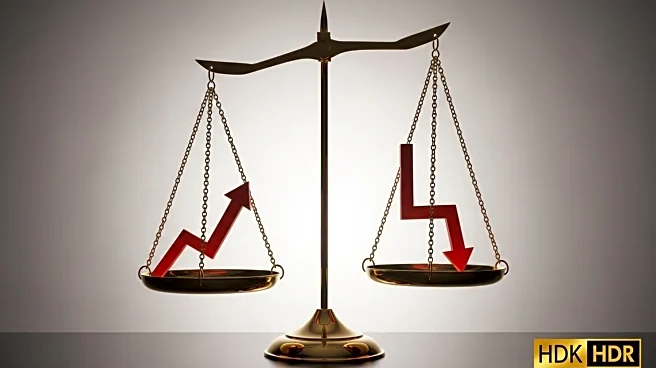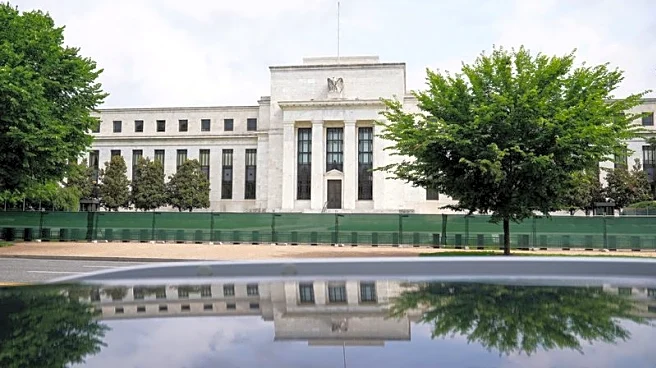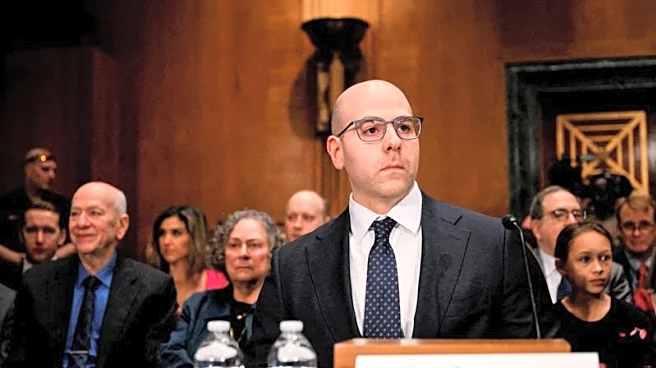What's Happening?
The Federal Reserve has reduced its benchmark interest rate by a quarter percentage point, marking the first rate cut of 2025. This decision, made in a split vote, lowers the rate to a range of 4%-4.25%. The move comes amid a softening labor market and increased economic uncertainties, including the impact of tariffs. Fed Chair Jerome Powell emphasized the need for time to assess these impacts, despite criticism from the White House for delaying the cut. Newly appointed Fed governor Stephen Miran, a White House adviser to President Trump, advocated for a larger cut. The Fed's 'dot plot' indicates a median expectation of two more rate cuts this year.
Why It's Important?
The Federal Reserve's decision to cut interest rates is significant for the U.S. economy, as it aims to stimulate economic activity amid a slowing labor market. Lower interest rates can reduce borrowing costs for consumers and businesses, potentially boosting spending and investment. However, the decision also highlights tensions between the Fed and the White House, with differing views on the appropriate monetary policy. The rate cut could impact various sectors, including housing and auto loans, by making financing more affordable. The Fed's commitment to maintaining its independence is crucial for its credibility and effectiveness in managing economic policy.
What's Next?
The Federal Reserve plans to monitor economic indicators closely, with two more rate cuts anticipated this year. Stakeholders, including businesses and investors, will be watching for further guidance from the Fed on its monetary policy direction. The central bank's actions will likely influence financial markets and economic forecasts. Additionally, the Fed's relationship with the executive branch may continue to be scrutinized, especially regarding its independence in decision-making.











